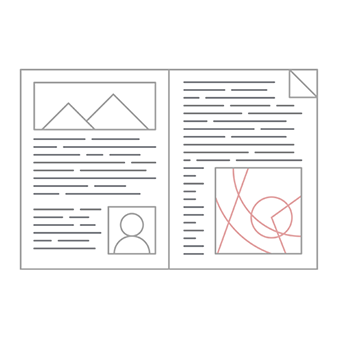Helmut Federle
HELMUT FEDERLE PETER BLUM Two hundred of Helmut Federle`s works on paper-working drawings and autonomous improvisations, the earliest from 1969-made
Donald Kuspit / ARTFORUM
Nov 01, 2003

Two hundred of Helmut Federle`s works on paper-working drawings and autonomous improvisations, the earliest from 1969-made for a stunning record of the artist`s development from a painter of landscapes, however abstract, to a painter of abstractions oddly evocative of landscapes. Federle acknowledges the influence of Agnes Martin, whose abstractions also have a landscape implication (she has recognized the effect of her native Saskatchewan prairie on her works). But Federle`s are much more dynamic and unsettled than Martin`s, no doubt because his point of departure is the mountain terrrain of Switzerland.
The jaggedness of Ohne Titel (fur Viviane), ca. 1976, can also be seen in Fur Kirchner + Davos, 1980. It`s registered more subtly in the eccentric so-called field works of the mid-`90s, where the cubist angles of the earlier landscapes have flattened and an ambiguous planarity remains. Even when the artist explicitly invokes a landscape, as in Sun over Red Sea, 1981 (which, with all its gloom and geometry, has a certain affinity with early German Expressionist landscape worship), or Sils Maria, 1990 (Nietzsche`s magic mountain), this sense of planar "trickiness" remains.
In conversation, Federle has spoken of self-doubt; it becomes clear he means something resembling Cartesian doubt. As with Descartes, at the bottom of his self-questioning is the cogito-in this case, the abstract fundament of visual thinking that is as much an activity of pure intellect as of philosophy. With Federle, the tension between image and abstraction-signaled by the Mondrianesque character of much of the work-is secondary to the nuances of shape, line, color, and surface. (Tree for Mondriaan, 1980, painted the same year as Fur Kirchner + Davos, reminds us that Mondrian`s abstractions are rooted in geometrical "reprises" of landscapes rural and urban.) Federle is at bottom a purist mystic; Thuner See (fur Ferdinand Hodler) (Thun Lake [for Ferdinand Hodler]), 1991, recalls that Swiss master`s landscapes but emphasizes the abstraction embedded in the Hodlers` natural purity. Rationale und Irrationale Struktur (fur Ferdinand Hodler "Zur Warheit") (Rational and Irrational Structure [for Ferdinand Hodler "In Quest of Truth"]), 1991, makes this point decisively as well.
Federle`s art is in fact an attempt to integrate rationality and irrationality while revealing their difference. Ultimately, perhaps, he wants to demonstrate that human feeling and pure form are inseparable-like the Symbolist conviction that every form is a pure expression of an emotion (Gauguin`s example was the "weeping" willow). Such Symbolism is ironically evident m H wie Helmut, H wie Hoffnung, H wie Hartherz, H wie Hetero (liegendes H), H wie Heimweh, H wie Hass (H as in Helmut, H as in Hope, H as in Heart, H as in Hetero [Horizontal H], H as in Homesick, H as in Hate), 1981, an abstract self-portrait with a perverse link to Arthur Rimbaud`s synesthetic "vowels equal colors" formula. Like the most convincing "purist" work, this drawing-even more ironic than the famous painting in which Federle presented a swastika as an abstraction-is absurd (and provocative). It suggests that Federle, like the pioneering abstractionists, conceives of pure art as a sacred space where the homeless self can find sanctuary. Zwei Zeichen uber der Erde (Two Signs Above the Earth), 1981, and Innerlight II, 1988, hint as much. In pure abstraction, what other light is there?
-DK
COPYRIGHT: Copyright Artforum Inc. Nov 2003. Provided by Proquest- CSA, LLC. All Rights Reserved. Only fair use as provided by the United States copyright law is permitted.
PROQUEST-CSA, LLC- MAKES NO WARRANTY REGARDING THE ACCURACY, COMPLETENESS, OR TIMELINESS OF THE LICENSED MATERIALS OR ANY WARRANTY, EXPRESS OR IMPLIED.







